What is Biltong? Biltong is a Dutch word for a dried steak of cured meat. The word biltong comes from the Dutch bil (buttock) and tong (strip) – it originated in Southern Africa.
In the 17th century, the need for food that wouldn’t spoil when trekking great distances overland – as well as travelling weeks at sea for trade between Europe and Asia – drove the refinement of meat preservation. Meat preservation dates back to ancient times of the indigenous peoples of Southern Africa, the Khoisan Bushmen; they were the first people of Africa dating back some 60,000 years.
The Dutch East India Company established a halfway house in Cape Town (circa 1650) to supply their vessels with produce and meat; their vessels traded spices from the East with goods from Europe. To preserve meat, the early European settlers used vinegar and salt in the curing process. The Dutch introduced spices from the East such as pepper and coriander. To this day, the basic curing process remains unchanged with salt, vinegar and spices being the key ingredients applied to raw meat that’s hung and air-dried to create biltong. Recently, in 2017, research at the University of Beira Interior in Portugal found that 10 of 12 strains of bacteria found in meat were killed with a relatively mild concentration of coriander oil; in the two that weren’t killed, coriander oil reduced their growth significantly.
Biltong vs Jerky
Biltong is traditionally marinated in vinegar and spices that add extra flavour as well as preserving the meat; this can be consumed as ‘wet’ (rare) or ‘dry’ (well done) depending on personal preference. Jerky often has a dry and smoky taste. The key difference is biltong is hung and air-dried, while jerky is cooked on a rack.
The main ingredients to make biltong are meat, salt, vinegar, coriander and/or other spices of personal preference.
Choice of Meat
Biltong is generally made from beef because it’s readily available and costs less than wild game; other meats that have been used include chicken, ostrich and fish.
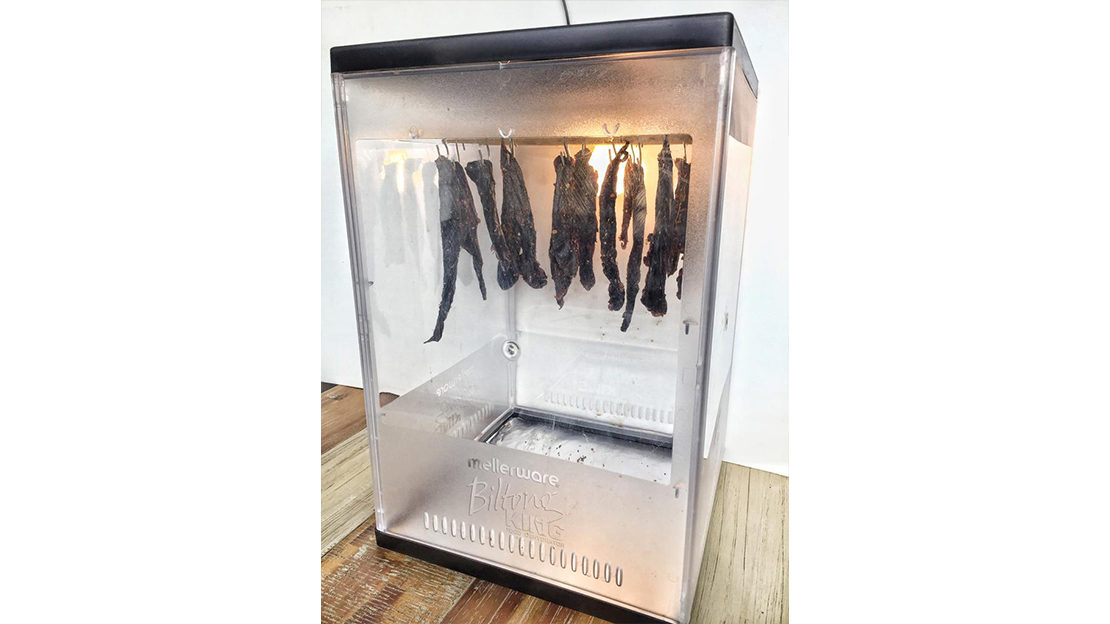
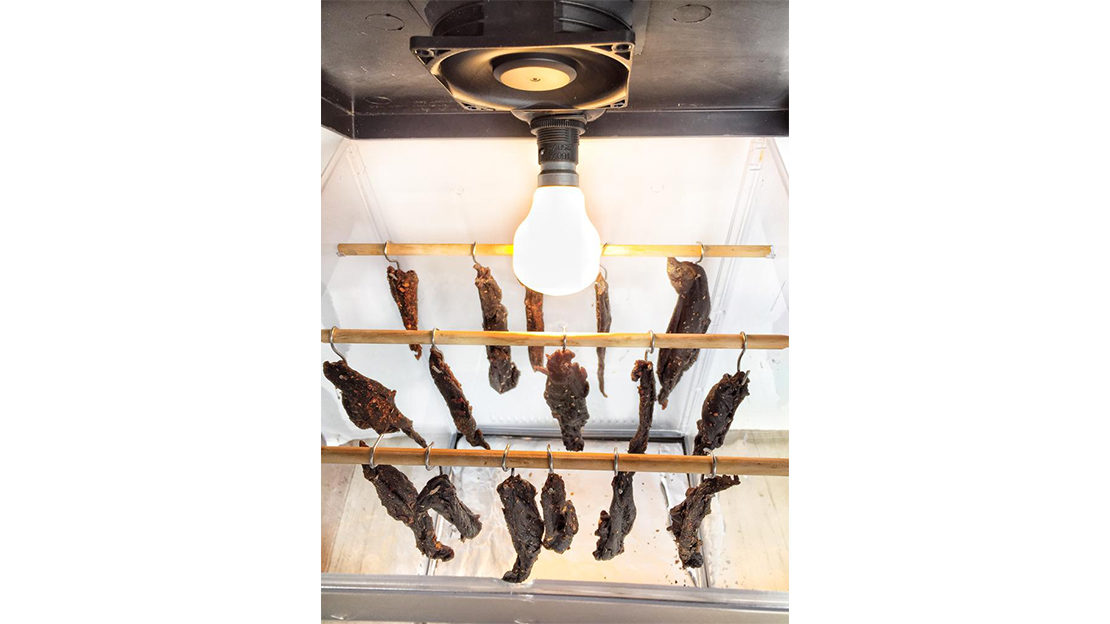
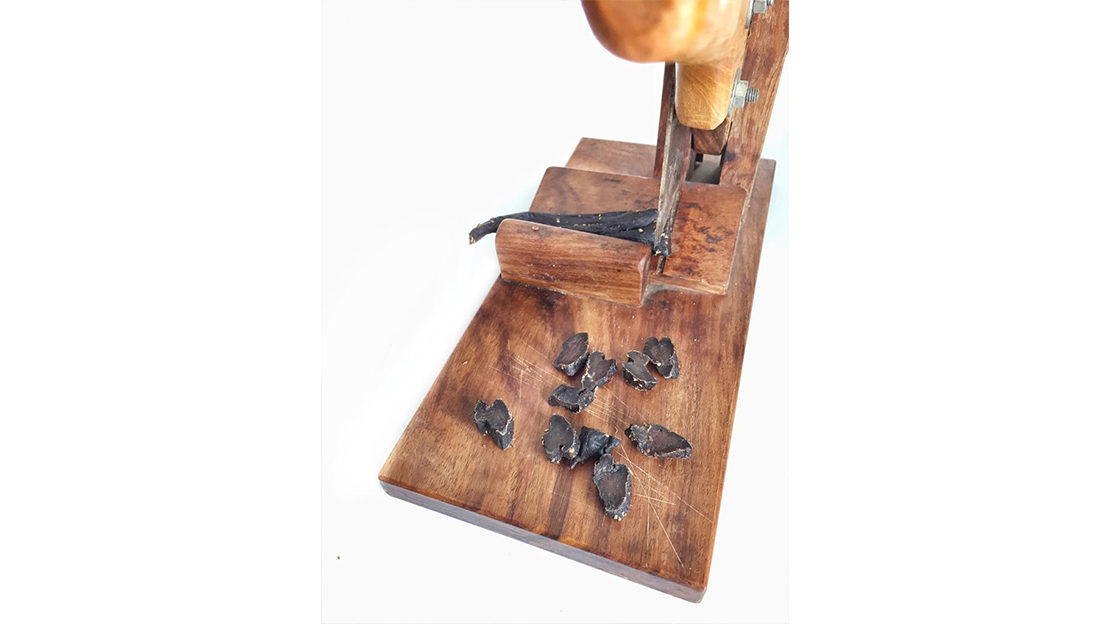
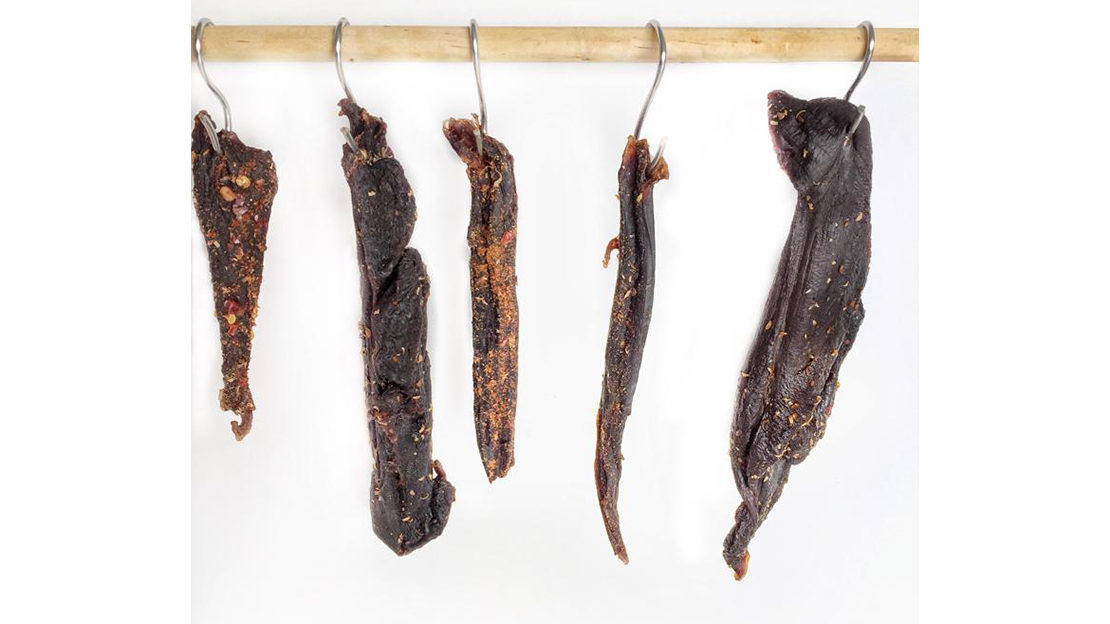
Making Biltong
It’s relatively easy to make biltong and quite rewarding when you master the finished product to your taste. There are many different ways this is done. A simple method is:
Cut the meat into steaks approximately 2cm thick – cutting across the grain is preferred.
Lay on a flat surface and spread coarse salt over the meat. Allow this to be absorbed for approximately 30-45 minutes.
Remove the salt, and bathe meat in a bowl of malt vinegar. If you want gluten-free, use a white vinegar. You’ll notice the meat goes from bright red to a light brown colour – this is part of the curing process. According to World Health Organisation, vinegar is a prime inhibitor for clostridium botulinum – a deadly bacterium that causes botulism – whilst salt, coriander, pepper and spices have antimicrobial properties.
Once removed from the bowl, place on a flat surface and massage your chosen spices into the meat.
Leave to marinate overnight 12-24 hours.
In a home environment, drying with an electric lamp in a container such as a cardboard or wooden box is common. It’s important there be adequate ventilation, otherwise mould can begin to form on the meat – a fan will deliver this.
Traditional slow-dried is best, with a temperature of 30-35 degrees Celsius. Leave an aperture (open the door a fraction) to let out moist air. Depending on the environment (heat and ventilation), the biltong will be ready in 2-4 days. Enjoy!
Health and Benefits
Healthy eating has taken the world by storm. Biltong is rich in protein and a great source of minerals such as zinc, iron, magnesium and B12; a 25g serving provides 50% of your daily protein requirements. There’s no chemical content, no artificial colouring, etc. The drying process of low heat and airflow in the manufacture of biltong means core nutrients are retained instead of being cooked out as applies with other dried products.

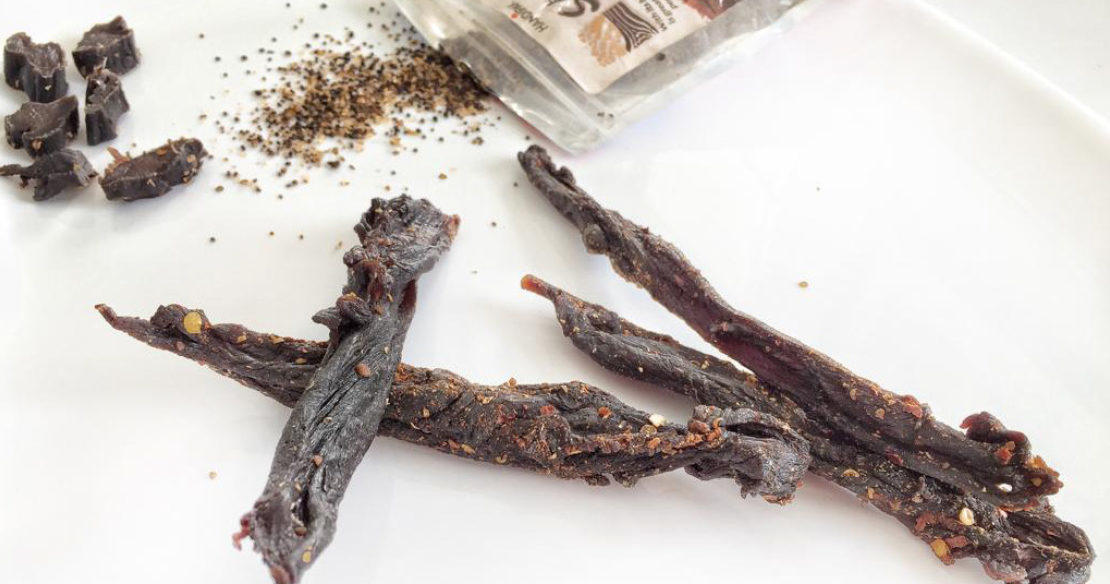
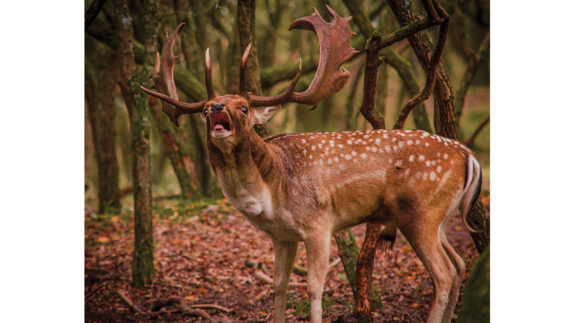
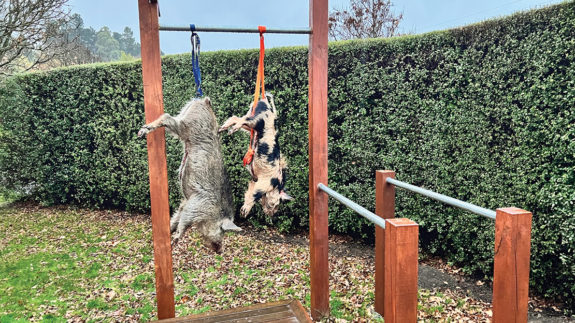


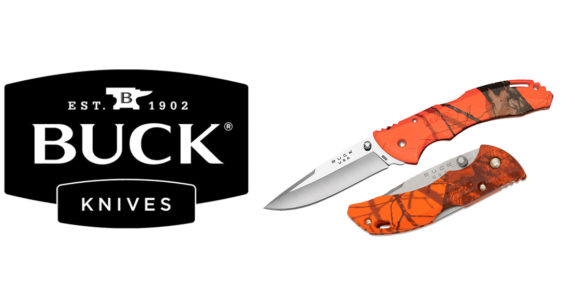
SHARE YOUR BEST PICS #NZRODANDRIFLE